- News
- Reviews
- Bikes
- Components
- Bar tape & grips
- Bottom brackets
- Brake & gear cables
- Brake & STI levers
- Brake pads & spares
- Brakes
- Cassettes & freewheels
- Chains
- Chainsets & chainrings
- Derailleurs - front
- Derailleurs - rear
- Forks
- Gear levers & shifters
- Groupsets
- Handlebars & extensions
- Headsets
- Hubs
- Inner tubes
- Pedals
- Quick releases & skewers
- Saddles
- Seatposts
- Stems
- Wheels
- Tyres
- Tubeless valves
- Accessories
- Accessories - misc
- Computer mounts
- Bags
- Bar ends
- Bike bags & cases
- Bottle cages
- Bottles
- Cameras
- Car racks
- Child seats
- Computers
- Glasses
- GPS units
- Helmets
- Lights - front
- Lights - rear
- Lights - sets
- Locks
- Mirrors
- Mudguards
- Racks
- Pumps & CO2 inflators
- Puncture kits
- Reflectives
- Smart watches
- Stands and racks
- Trailers
- Clothing
- Health, fitness and nutrition
- Tools and workshop
- Miscellaneous
- Buyers Guides
- Features
- Forum
- Recommends
- Podcast
review
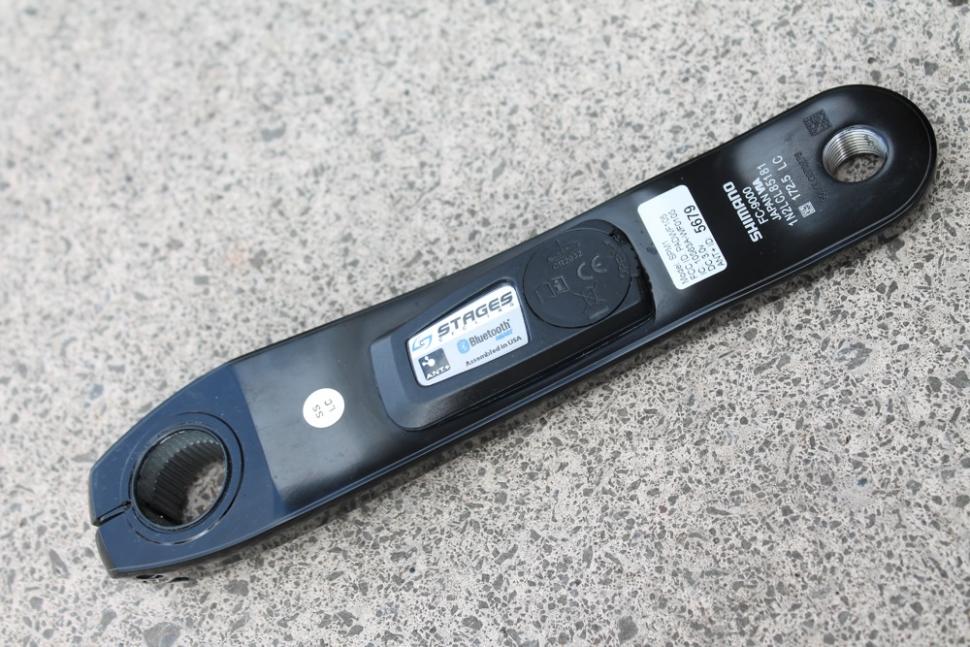 Stages Cycling power meter sensor side
Stages Cycling power meter sensor side £799.00
VERDICT:
Lightweight and easy to fit power meter that gives results comparable to much more expensive systems.
Weight:
196g
Contact:
www.saddleback.co.uk
At road.cc every product is thoroughly tested for as long as it takes to get a proper insight into how well it works. Our reviewers are experienced cyclists that we trust to be objective. While we strive to ensure that opinions expressed are backed up by facts, reviews are by their nature an informed opinion, not a definitive verdict. We don't intentionally try to break anything (except locks) but we do try to look for weak points in any design. The overall score is not just an average of the other scores: it reflects both a product's function and value – with value determined by how a product compares with items of similar spec, quality, and price.
What the road.cc scores meanGood scores are more common than bad, because fortunately good products are more common than bad.
- Exceptional
- Excellent
- Very Good
- Good
- Quite good
- Average
- Not so good
- Poor
- Bad
- Appalling
The Stages Power meter is lightweight, easy to fit and, according to our tests, it gives results that are comparable with those of systems costing twice as much.
The Stages Power meter is housed in a left (non-driveside) crank. You buy the complete crank with the power meter already installed. Stages offer various different models starting at £599, but only in alloy cranks. They say that carbon doesn't provide the consistent deflection curve needed for the technology to measure accurately.

There are currently no Campagnolo options and if you want a SRAM version, it has to be Rival (which you can use with a Red driveside crank, for example). We used the Shimano Dura-Ace 9000 version, so Shimano made the crank and Stages added the power meter.
The Stages system relies on a bending beam that is added in a pod on the crank. When you push on the pedals, the crank deflects enough for the bending beam to pick up the movement, accelerometers measure cadence down to 30rpm, and the data is converted into a power reading. The Stages system adjusts automatically for changes in temperature. By power meter standards, the way Stages derive your power figure is relatively straightforward, and they believe this simplicity ultimately leads to accuracy.
The Stages system adds less than 20g to your bike and it runs on an everyday CR2032 coin cell. You get about 200 hours of use per battery, according to Stages.
Fitting and setup
Fitting the Stages Power meter is simple. You take off your left crank and replace it with the one from Stages. The Stages unit protrudes slightly from the inner face of the crank and that means it's not compatible with some bikes with very tight chainstay clearance, but you'll be okay in the vast majority of cases. If you're worried, go to the Stages website and perform the quick check they suggest.
Assuming everything is fine, you tighten your pedals in place. If you want to swap between bikes, it's equally easy as long as you have the same (or a compatible) groupset on the other bike, of course.
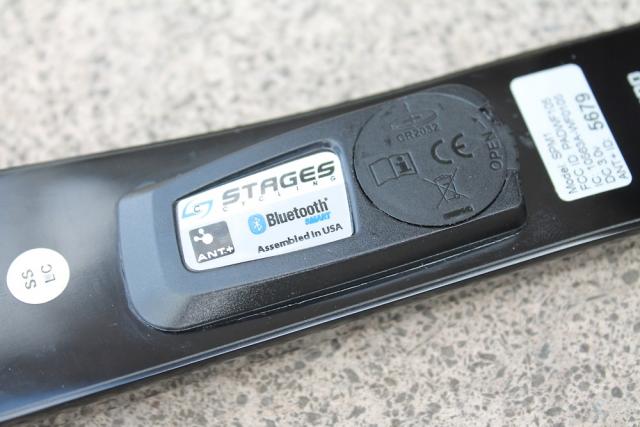
You then need to follow your bike computer's instructions for pairing with the powermeter, which is likely to take seconds. A Stages Power meter will work with both ANT+ and Bluetooth Smart units.
At the start of every ride you should 'zero reset' the system to get the most accurate results. You just sling the cranks into the vertical position and follow the zero reset procedure on your computer. With a Garmin, you just hit 'calibrate'. You'll hopefully get a message within a few seconds telling you that it has been successful. It always worked first time for me. Then you're ready to ride.
During the ride
Once out on your ride, the Stages system is so lightweight and unobtrusive that you don't notice it at all, and you don't need to do anything out of the ordinary. Unlike with some systems, there's no need to zero reset while on the road. Even if you head up a big mountain and the temperature plummets, the system updates automatically.
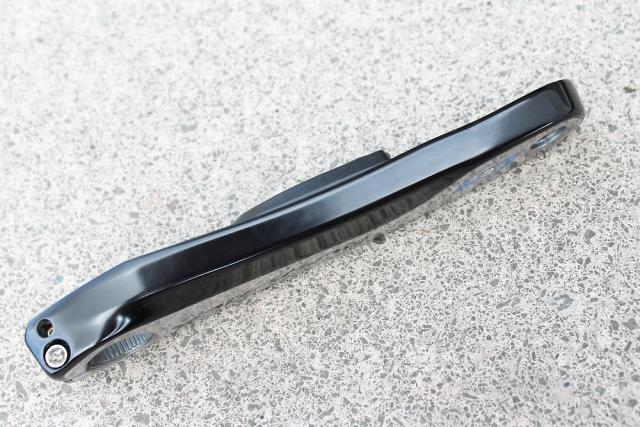
The amount of information you can display varies according to the head unit that you use. I paired the Stages Power meter with a Garmin Edge 510 most of the time, and displayed my average power over the whole ride and the power for the last 30 seconds (to smooth out big peaks and troughs), but there are usually loads of power measurements you can choose to show. You also get a cadence measurement without the need to add anything else to your bike '' no magnet, no sensor.
Results
You have to go to some lengths to get meaningful information in a power meter review. To compare the Stages meter with other power meters I fitted the Stages crank, a PowerTap and Garmin Vector pedals to the same bike, and used three different computers to display and collect the data prior to uploading it. I followed each company's installation and calibration instructions to the letter, and made sure the Garmin Edge computers were all recording and dealing with zero power in the same way. Then I used the Stages Power meter alongside these other systems on every ride for seven weeks: short rides, long rides, steady rides, hard rides, interval sessions, turbo sessions... you name it.
The results from the various setups were never exactly the same, so how do we know which are most accurate? You might get similar results from two of the powermeters with the other disagreeing, but that doesn't mean anything. It's not a democratic process – the outlier might be giving the truest reflection of your actual power.
Plus, ANT+ powermeters send out four 'data packets' of information per second and the Garmin computer head units pick up only one of these packets (that's a whole discussion in itself; let's not go into depth here). Run two computers picking up information from the same powermeter and they won't necessarily give you exactly the same results because they'll pick up different data packets. You can get really geeky about this stuff if you want; it's never ending. SRM's PowerControl head unit grabs all data packets sent by the sensor, for example. Using Bluetooth and an app, you can grab all data packets sent by the Stages Power meter.
We can't tell you for sure which powermeter is the most accurate, then. Sorry, but it's just not possible. What we can tell you is that Stages reckon their system is accurate to within +/-2% when you're riding at 100W and 90rpm – so in that scenario you'll get a reading somewhere from 98 watts to 102 watts. They say that the 4 watt range stays the same as you put in more power, so the system gets more accurate in percentage terms.
Looking at our results, the Stages system gave us figures that were within 10 watts of those from our PowerTap most of the time, and within about the same from the results from the Vector system, sometimes a little higher during high-intensity bursts. The averages over the course of a ride were always within 5 watts. These differences easily fall within the operating tolerances given by the manufacturers for each of the systems.
What is perhaps more important than the absolute figures is that the three systems tracked one another impressively consistently – not completely consistently, but always within those operating tolerances. Whether the power you put in is given a figure of 250 watts or 255 watts probably isn't that important to you, it's the fact that the figures you get are consistent that's more valuable and, for us at least, they were.
There was the odd anomaly when the figures from one system would spike or drop relative to the figures from the other two, but nothing that would affect the overall results. The only time figures would stray beyond the bounds explainable by the operating tolerances was an occasional seemingly random high power figure – but that's nothing in the overall scheme of things.
One criticism levelled at the Stages system is that it measures power just through the left crank and doubles it, effectively assuming that you're doing an equal amount of work with each leg.
How much of an assumption is that to make? It's hard to say. The biggest discrepancy the Garmin Vector pedal system has given me in left/right balance over the past couple of months has been 48%/52% but – and this is a crucial point – Garmin say their system is accurate to within +/-2% (they don't say in what circumstances) so there's some wiggle room in those figures.
Even if you did have a significant discrepancy in leg strength, as long as it's consistent within a ride and from one ride to the next, the results you get from a Stages Power meter would still be consistent, and that's the most important thing.
You could get lost forever in the maths and the theory but Stages reckon that their left leg force measurement is more accurate than anything else on the market (including SRM) due to them looking at the force input as simply as possible through the single beam in the crank arm.
They also think that their assumption of symmetry is justified in the vast majority of cases, giving figures that fall within their published system tolerances, and that their use of their calibrated temperature compensation system adds to the overall accuracy.
There's nothing in the data we've collected over the past few weeks that makes us think that the results from Stages fall outside of those claimed system tolerances and for that reason, along with the price and the ease of use, we'd wholeheartedly recommend it.
Verdict
Lightweight and easy to fit power meter that gives results comparable to much more expensive systems.
road.cc test report
Make and model: Stages Power meter
Size tested: 172.5mm
Tell us what the product is for, and who it's aimed at. What do the manufacturers say about it? How does that compare to your own feelings about it?
Lots of people have the idea that power meters are only for hardcore racers. Serious athletes will certainly get a lot out of the Stages system, but so will anyone else who wants to maximise the physiological benefit they can get from their time on the bike.
Rate the product for quality of construction:
8/10
Stages just take an existing crank from the relevant manufacturer, make a hole and add their device in there.
Rate the product for performance:
9/10
Hidden away in a hollow in the inner face of the crank, you'd have to be pretty careless or very unlucky to damage it. I guess you could damage the left crank in a crash to the point that it's no longer useable '' but you could say that about any component.
Rate the product for weight, if applicable:
10/10
It adds 20g to an existing crank. That's really not worth worrying about
Rate the product for value:
10/10
Prices start at £599. In this market, that's cheap.
Tell us what you particularly liked about the product
Lightweight, easy to setup, easy to use, difficult to damage, gives results comparable to those of far more expensive systems.
Tell us what you particularly disliked about the product
Um... All other things being equal, I guess I'd like info on left/right leg balance, but I'm struggling to pick faults here.
Did you enjoy using the product? Yes.
Would you consider buying the product? Definitely.
Would you recommend the product to a friend? Definitely.
About the tester
Age: 43 Height: 190cm Weight: 75kg
I usually ride: My best bike is:
I've been riding for: Over 20 years I ride: Most days I would class myself as: Expert
I regularly do the following types of riding: commuting, club rides, sportives, general fitness riding,
Mat has been in cycling media since 1996, on titles including BikeRadar, Total Bike, Total Mountain Bike, What Mountain Bike and Mountain Biking UK, and he has been editor of 220 Triathlon and Cycling Plus. Mat has been road.cc technical editor for over a decade, testing bikes, fettling the latest kit, and trying out the most up-to-the-minute clothing. He has won his category in Ironman UK 70.3 and finished on the podium in both marathons he has run. Mat is a Cambridge graduate who did a post-grad in magazine journalism, and he is a winner of the Cycling Media Award for Specialist Online Writer. Now over 50, he's riding road and gravel bikes most days for fun and fitness rather than training for competitions.
Latest Comments
- Rendel Harris 1 hour 48 min ago
Not every freehub makes a noise, especially older ones manufactured before sounding like a Maxim gun apparently became a badge of honour.
- ubercurmudgeon 2 hours 18 min ago
Some quotes need to be put around the word "reciprocal" in the first paragraph.
- David9694 2 hours 54 min ago
this one is wide open for puns, come on people.
- BikingBud 2 hours 55 min ago
Do you mean this woman, who got out to marshall the truck through and is now walking back to said Wankpanzer which is blocking the road again as it...
- mark1a 3 hours 10 min ago
This simply isn't true. I've been running radar lights for 10 years now. I cycle mostly on rural roads, I get notified of approaching vehicles up...
- Rendel Harris 5 hours 40 min ago
Genuinely puzzled as to how you've extrapolated that from what I said. Care to explain?
- Pub bike 1 hour 23 min ago
He is up against the global trading system, which has obviously been in the news a lot lately. Framebuilders in other countries can undercut him,...
- Destroyer666 21 hours 14 min ago
Have you owned Bont shoes? In my experience even the widest Lake shoes have had a bizarre form of narrowing way too much in the toe area. But the...
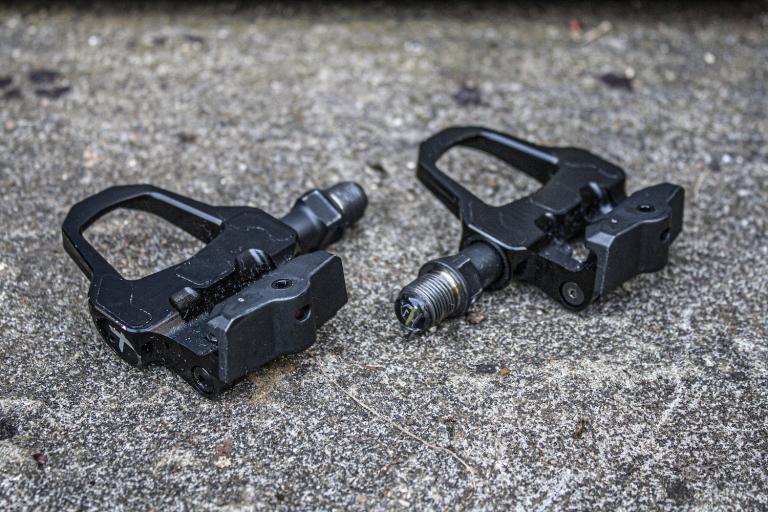
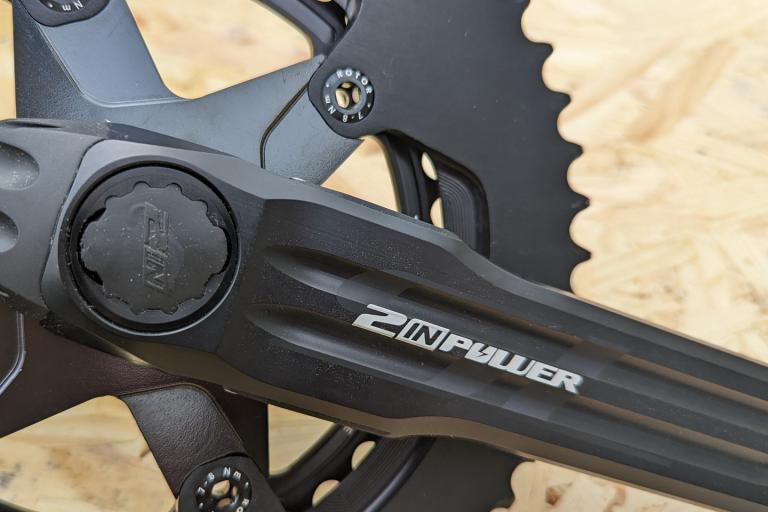


Add new comment
24 comments
Watch out for the clearance past the brake calipers on under chain stay mounted rear brakes. There is no enough clearance on some brake models. Email Stages and ask if your brakes are compatable; mine weren't.
I never used any power meter but I don't think the displayed power value will increase two times if you unclick the right leg and try to ride with the same speed pedalling only with the left leg.
The Stages system can not measure the power output from the right leg but it can measure exact acceleration. I think the system matches the left leg power, acceleration and cadence to evaluate the right leg power via interpolation/extrapolation since the cranks are almost symmetrical
**UPDATE**
After Stages have seen my comments, they have contacted me, and i now have a replacement unit. I wish i had conatcted them directly as being in the UK, i was dealing with the local supplier. If you are having issues, contact Stages direct.
The issue i had was caused by a batch of faulty battery covers, and you can really tell the difference on the new units. Cannot wait to try the replacement and post some more updates!
I had one for four months, worked for about 2 weeks in total, sent back once for repair, worked then stopped again. Then when i asked for a replacement was told there was a 4-5 week lead time. I asked for a refund. Shame as purchased as it seemed the best option for easily swapping between bikes, and really liked training with power.
Mine more or less had to ahve a new battery every time you wanted to use it.
But i could not justify £699 on something that seemed so unreliable.
My experience would say this has been realeased to early and they are still ironing out issues, i would suggest wating 12 months until these are sorted, and when pro teams are using i think that is a sign they are reliable.
Shame as great idea, and very easy to move between bikes, and compared to others on the market "cheap".
**Update**
Seems my posts to the Stages Facebook page keep mysteriously disappearing as well, soon after posting. Nothing untruthful just stating the facts and they keep being taken down, another down point in my book.
For sure - my next purchase. The 105 version for me, cheaper and works well. The bonus of cadence measurement is great. I'm using the iPhone with Bluetooth and this seems to only option for me. It'll be interesting to see how I move from heart rate measurement to power - I'll have them side by side on the RFLKT.
Interesting to see Stages chip away at the price of power-meters. Hopefully this trend continues.
I'm really curious to see what happens with Brim Brothers. Pushing the price down was a goal of theirs too, but they've pushed their release dates back a few times and been quiet for a while now.
Also in the market for one of these. The other options are £400+ extra on top of stages. As long as it provides consistent data that is all a non-pro rider needs, surely?
I have been seriously considering a stages power meter for a while now. It might still be tad out of my price range but definitely the most affordable option. They have also recently increased their offerings for a BB30 crank
I don't need a power meter and have always thought of them as a racers only upgrade, however this makes me think it won't be long before I "need" to know how few Watts I'm pushing out on the way to work.
you said that already
Strikes me that road.cc could very easily support a 4th year engineering student at the University of Bath to investigate different commercial power meters just by supplying the product.
All sorts of geekery possibilities...
Strikes me that road.cc could very easily support a 4th year engineering student at the University of Bath to investigate different commercial power meters just by supplying the product.
All sorts of geekery possibilities...
Strikes me that road.cc could very easily support a 4th year engineering student at the University of Bath to investigate different commercial power meters just by supplying the product.
All sorts of geekery possibilities...
This is a couple of years ago, but it was cheaper to fly out to New York, buy the Adobe Master Collection, stay the night before flying home than it was to purchase it in the UK.
The part I like about Stages is that it doesn't contain moving parts so unlike Bottom Bracket or Hub based systems there shouldn't be bits that need replacing regularly (don't get me started on how quickly pedal bodies wear out).
I think it's a great option for anyone looking for a basic power meter and I wish them luck.
As far as I am aware there isn't currently a bottom bracket based power measurement system, it's usually the crank spider which is highly unlikely to wear out any time soon!
The only models with moving parts are the powertap (hub based) and pedal based systems like the Garmin Vector and that weird proprietary system from Polar that no one ever seems to actually use.
I know Power2Max have fielded the same discussion before. Buying from the States is cheaper partly due to the exchange rate, but mostly to do with tax. For P2M there's less of an issue as they're based in the EU, but we still see a discrepancy between US and UK pricing. You can see the responses by P2m in the comments over at DCRainmaker: http://www.dcrainmaker.com/2013/09/power2max-prices-praxis.html
Personally when I pull the trigger I'll probably either order a P2M direct or get bored of saving and accidentally pick a Stages 6800 up in Sigma Sport...
Also remember in the US you are buying from a dealer who buys direct from stages.
In the UK you have bought it from a dealer who buys it from the Uk distributor (Saddleback) who buys it from stages.
Saddleback need to cover import duties, shipping to UK (expensive air freight). They also have to add margin to cover their costs, paying wages, warehousing, marketing, the list is endless....
If you buy from the US don't expect any back up or customer service in the UK if you experience issues.
Well, for a start the Dura-Ace 9000 version as tested here is $899 in the USA. Then you have sales tax and shipping.
If you want one sent over to the UK, you'll have to pay duty and VAT.
Stick it all through something like http://www.dutycalculator.com and see what figure you get.
If you decide to go ahead anyway, let us know how you get on.
Really like this, but yet again we are ripped off with prices, we have the $799 = £799 why ? yes I know it needs to be shipped over (like shipping is free in the USA !) and there is import tax (I believe around 10% for this but I could be wrong), price should be closer to £550-£600.
Try and buy one from the USA.
People who complain about US/UK price conversions always conveniently forget the big one - sales tax. On online sales in the states this is generally 0%. We pay a rather large 20% in VAT, that's before you factor in import tax too. So the price is sadly probably not far from spot on.
I'm in the process of ordering one just now, annoyingly there is now a wait till January for new stock to arrive in the UK.
You're right about the VAT but it still doesn't account for the price discrepancy. I'm in Texas; if I buy a Rival or 105 online from Stages it's $699+$10 shipping; that converts to only around £440. Add 20% to that and you are still a long way off £699. I could buy these and ship them as "gifts" to the UK, that makes them free of duty if I accidentally fill in the wrong value on the customs declaration; next stop eBay!!
I could buy these and ship them as "gifts" to the UK, that makes them free of duty if I accidentally fill in the wrong value on the customs declaration; next stop eBay!!
Now
You are... although that would be more relevant if the Rival and 105 Stages systems did cost £699, rather than the £599 that they actually do cost.
And you have to factor in import duty as well as VAT.
Been considering one for next season (or possibly during the winter), and all the points you make are why I like it - consistency is more important than 100% accuracy for most people. I also like that it's easy to swap between bikes as well, the only difference on my bikes being that one is DA and one is Ultegra, but that's not a big issue, and it will go with my compact and standard chainsets.